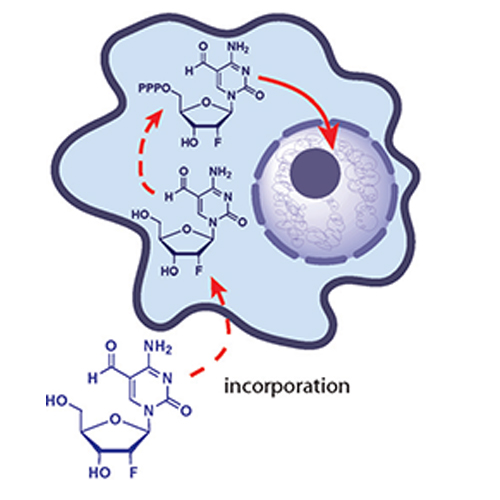Deformylation of 5-Formylcytidine in Different Cell Types
2021-07-10
M. Sc. Eva Korytiaková, Ewelina Kamińska, Dr. Markus Müller, Prof. Dr. Thomas Carell
Epigenetic programming of cells requires methylation of deoxycytidines (dC) to 5-methyl-dC (mdC) followed by oxidation to 5-hydroxymethyl-dC (hmdC), 5-formyl-dC (fdC), and 5-carboxy-dC (cadC). Subsequent transformation of fdC and cadC back to dC by various pathways establishes a chemical intra-genetic control circle. One of the discussed pathways involves the Tdg-independent deformylation of fdC directly to dC. Here we report the synthesis of a fluorinated fdC feeding probe (F-fdC) to study direct deformylation to F-dC. The synthesis was performed along a novel pathway that circumvents any F-dC as a reaction intermediate to avoid contamination interference. Feeding of F-fdC and observation of F-dC formation in vivo allowed us to gain insights into the Tdg-independent removal process. While deformylation was shown to occur in stem cells, we here provide data that prove deformylation also in different somatic cell types. We also investigated active demethylation in a non-dividing neurogenin-inducible system of iPS cells that differentiate into bipolar neurons.








